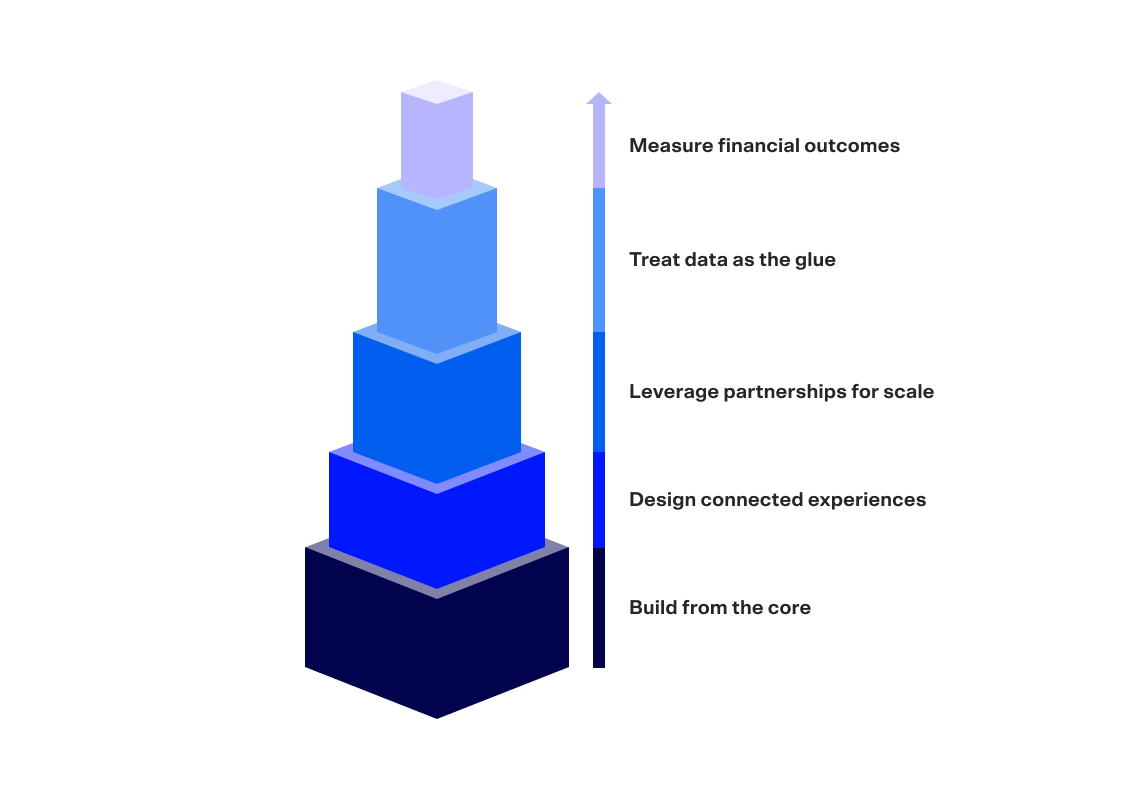Why Ecosystem Brands Are Reshaping Growth
An ecosystem brand is more than a product portfolio. It is a brand ecosystem—a connected network of products, services, and experiences that enable customers to meet multiple needs in one seamless environment. These brands use data, design, and brand platforms to deliver convenience, drive loyalty, and multiply value across the entire company.
Today, building an ecosystem is no longer reserved for tech giants. Businesses across categories—from retail to healthcare to financial services—are embracing an ecosystem approach to stay relevant, differentiate from competitors, and unlock new streams of revenue and growth.
The reason is clear: ecosystems don’t just sell products, they create connections. They enable users to interact across touchpoints, build long-term relationships, and increase customer lifetime value. They also protect brand integrity, reduce inconsistent messaging, and minimize wasted resources by turning every investment in marketing campaigns and brand materials into part of a cohesive whole.
This is why Vivaldi Group has partnered with WARC to launch a playbook that defines how to design, build, and scale ecosystem brands that deliver measurable business impact.
From Brands to Platforms
A strong brand today must evolve into a platform. This means moving from isolated products or marketing campaigns into a brand platform that connects offerings, customers, employees, and external partners in one system.
At the heart of every ecosystem is a core offering. This core purpose gives customers permission to follow the brand into adjacent categories. For example, when a company starts with a product that people trust and love, it can expand into service, content, and even community experiences that extend the brand experience far beyond a single store or channel.
A brand platform also allows marketers and leaders to manage brand guidelines, ensure identity consistency, and create efficiencies across teams, tools, and resources. This builds cohesion across every campaign, every channel, and every interaction.
How to Build an Ecosystem Brand
The Vivaldi Group–WARC Playbook identifies five principles for creating ecosystem brands that deliver sustained growth and financial performance:
-
Build from the core
Anchor your ecosystem in a trusted product, service, or capability. Strong ecosystems expand from something that already builds trust with customers.
-
Design connected experiences
Campaigns deliver spikes of attention, but ecosystems thrive on continuity. Leaders must identify touchpoints, design seamless interactions, and deliver a unified brand experience across digital, physical, and social platforms.
-
Leverage partnerships for scale
No company can do it alone. Strategic partners, suppliers, and stakeholders enable brands to extend their capabilities and scale quickly. But partnerships must reinforce the core purpose and not compromise brand integrity.
-
Treat data as the glue
The ecosystem is held together by information. When brands enable data sharing across products and services, they can personalize experiences, increase loyalty, and differentiate from competitors.
-
Measure financial outcomes
The success of an ecosystem brand is not measured by likes or clicks. It’s defined by revenue, sales, profit, and enterprise value. Leaders must define strategy and metrics that track how each part of the ecosystem contributes to sustainable growth and loyalty.

Real World Examples of Ecosystem Branding
We see real world examples of this approach in action:
- Apple has turned hardware, software, and services into one connected ecosystem. By controlling design and identity across every product, it ensures brand integrity and maximizes customer lifetime value.
- Nike has expanded beyond shoes into apps, coaching, and community platforms, showing how a brand platform can enable everyday engagement and drive loyalty.
- Disney has built a brand ecosystem that links movies, parks, streaming, and merchandise. Its ability to create connected experiences across generations shows how an ecosystem can amplify growth.
These cases highlight the advantages of treating a brand as a platform, not just a campaign. They show how companies can expand into new categories while maintaining brand integrity and avoiding inconsistent messaging.
The Role of Leadership
Building an ecosystem brand requires leadership that sees beyond products and into systems. It requires organization management that aligns teams, ensures clarity of brand guidelines, and avoids wasted resources. It means empowering employees to act consistently, informing them with the right brand materials, and uniting them around the core purpose.
When done well, the result is a brand that is both focused and expansive, both consistent and innovative. It’s one company acting across many categories but experienced by customers as one coherent identity.
Defining the Future
The ecosystem approach is the future of brand-building. It ensures that brands don’t just launch marketing campaigns, but build lasting systems of value that serve customers, engage community, and deliver measurable results for investors and stakeholders.
With the Vivaldi–WARC Playbook, leaders now have the roadmap. It’s time to create ecosystems that connect ideas, customers, and business performance into one powerful growth engine.
